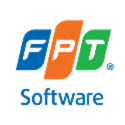Leveraging Automation Savings to Self-Fund Future GrowthLeveraging Automation Savings to Self-Fund Future Growth
Organizations can leverage automation savings to self-fund future projects, promoting growth, cost reduction, and efficiency amid rising costs. (SPONSORED)
August 16, 2023

(SPONSORED ARTICLE)
As the cost of doing business continues to rise, more and more industries are streamlining processes to increase efficiencies to reduce costs. The focus for many has been on cost reduction and revenue generation. These factors have been the driving force behind the automation acceleration since the Pandemic in 2020.
Automation initiatives can lead to substantial cost savings and efficiency gains for the business that help increase revenue margins. According to Gartner, automating the right processes with a strong ROI can drive a $1.5 trillion benefit in the global economy by 2030. Automation can drive increased cost savings and revenue through increased productivity. By automating repetitive and time-consuming tasks effectively, companies can enable their employees to work on more high-value strategic things that bring additional revenue or new revenue streams into the business. Simple case studies of increasing revenue with automation are:
Automating repetitive sales tasks allows the sales teams to work strategically with clients to generate more sales.
Increasing productivity of operations and delivery through automating repetitive tasks allow more throughput that can complete more tasks or widgets.
Using Intelligent Automation (IA) within the call center allows quicker responses to customer needs and agents to handle more complex problems.
As more and more organizations implement automation into their processes, they are coming across barriers inhibiting them from scaling up their automation practices. From conversations with FPT Software customers, we are seeing common barriers with automation that come in the form of high upfront costs, unclear ROI, choosing the wrong processes, and silo projects. These barriers are causing many in the executive branch to question the use of automation in their organization's modernization efforts. Because of these barriers, CFOs doubt whether Automation COEs and teams should be considered cost centers versus a strategic enabler. The unclear ROI and wrong process selection are the very things that provoke this thinking.
In one recent Gartner poll, 79% of the respondents stated that one of their most common challenges was estimating the ROI to select the best automation use cases. When RPA was the new shiny object in the room, organizations raced to implement RPA without looking at the ROI. It was more about being the first to table than looking at the ROI or understanding the business value.
Instead of looking at automation as a cost, we need to change our thinking to use automation as a strategic enabler. We need to consider using a self-fund model that uses savings from one automation project to fund the next automation project. The self-funding automation pipeline reaps the benefits of automation with an ongoing investment that does not require any more upfront costs. Using savings from existing automation projects to fund new ones is a unique and innovative way to fund these projects. It removes the barrier of the upfront costs and finding the funding needed for projects. Estimating the overall cumulative monthly and year-over-year savings can help align automation projects with the business objectives.
Moving away from a one-time benefit to looking at cumulative savings with a structured approach for automation process selection, companies can reinvest the savings from the projects that create a self-sustaining cycle of growth and improvement. The self-funding idea offers a range of benefits that will contribute to the long-term success of the business:
Increased Efficiency: When automation is used correctly, the automation projects build upon the previous ones, leading to continuous efficiency gains and improved throughput across various processes.
Cost Savings: Using the savings from existing automation projects to fund new ones reduces the need to find automation funding with already squeezed budgets.
Improved Competitiveness: The self-fund automation allows businesses to continually innovate by using the savings from previous projects to stay ahead of competitors.
Empowerment of the Employees: By removing waste from the process, employees can focus on higher-value work that increases productivity and satisfaction.
By continuously investing in automation, the self-funding approach allows companies to achieve a positive ROI over time through cumulative savings and increased revenue. The positive ROI moves automation from being a cost to a strategic enabler. When the self-funding model is set correctly, it removes the barriers of costs and allows businesses to cultivate innovation often inhibited by cost issues.
The self-fund strategic approach paves the way for continuous improvement and growth. By reinvesting in the benefits of automation, businesses can increase innovation and competitiveness in the ever-changing marketplace. Self-funding allows companies to stay at the forefront of industry advancements and ensure long-term success.

Lauren Hisey helps business leaders and their teams uncover and solve business problems with Continuous Improvement and Automation. Currently serving as a Senior Consultant and Automation Lead for FPT Software in North America, Lauren is an expert in Lean Six Sigma and helping businesses to improve profitability and culture to drive sustainable growth. With a roster of accomplishments that have captured $2000 M + in cost savings and revenue generation, she can help companies to see a different perspective to help them become profitable and sustainable in today’s ever-changing environment.
You May Also Like





